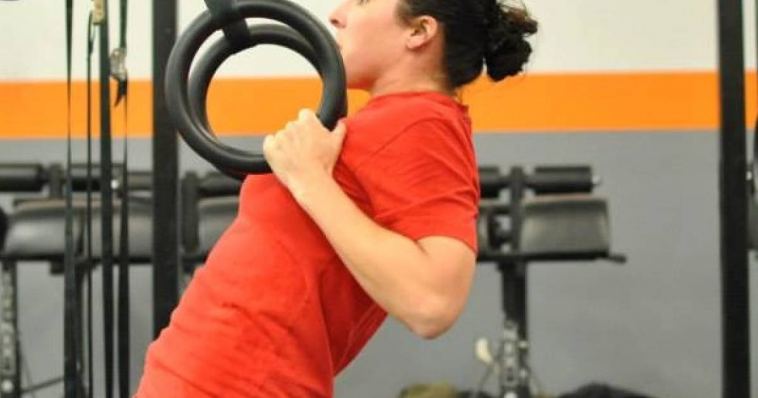- Like
- SHARE
- Digg
- Del
- Tumblr
- VKontakte
- Flattr
- Buffer
- Love This
- Save
- Odnoklassniki
- Meneame
- Blogger
- Amazon
- Yahoo Mail
- Gmail
- AOL
- Newsvine
- HackerNews
- Evernote
- MySpace
- Mail.ru
- Viadeo
- Line
- Comments
- Yummly
- SMS
- Viber
- Telegram
- JOIN
- Skype
- Facebook Messenger
- Kakao
- LiveJournal
- Yammer
- Edgar
- Fintel
- Mix
- Instapaper
- Copy Link
Bro, do you row? Almost every type of athlete, from elite weightlifter to weekend warrior, could greatly benefit from more pulling. Here are a few reasons:
- Improved Scapular Retraction: Due to the amount of time we spend hunched over various screens, the ability to pull the shoulder blades back and down is becoming a lost art. By fixing this one postural mistake alone, you will bulletproof your lower back and shoulders.
- Improved Performance: The muscles of the back have a role in nearly everything you do in the gym or on the field. Keeping the chest up during a squat, maintaining a neutral spine in the deadlift, sprinting speed, and even pressing performance all rely on strong back musculature. In addition, you need the ability to control and activate those muscles through nervous system recruitment.
Another big plus – developing the musculature in your back gives you a more confident appearance, and confidence is sexy. And there’s nothing wrong with training to look a little better with your clothes off.
So how can you get on the Rowed to Bowed? Here are my five favorite row exercises:
1. Single-Arm Cable Row
Single-limb exercises allow you to better focus on the desired muscle groups, which can lead to improved recruitment of muscle fibers, strength gains, and increased hypertrophy.
These exercises also require a ton of core stabilization in the form of anti-rotation of the torso. The single-arm cable row will be an immediate test of your anti-rotation strength by how difficult it is to keep your shoulders squared to the cable tower.
How to:
- Position a single handle attachment on a cable tower just below your waist. You want constant tension from the cable, so position yourself accordingly. Both your shoulders and feet should remain squared to the cable tower for the entire set.
- Using a neutral grip, contract your lats to row your elbow to the bottom of your rib cage. Imagine that creepy uncle behind you attempting to tickle your ribs and you’re squeezing your arm as hard as possible into your ribs.
- Control the eccentric portion to keep constant tension, and keep your shoulders squared.
Perfect for:
- Shoulder Health
- Hypertrophy
- Core Stability
2. Chest-Supported Row (T-Bar Row)
Rows should be used primarily as accessory exercises. A row should never put you at risk for injury. One common mistake I see with rows is the tendency to go too heavy at the sacrifice of form.
If you’re guilty of this, or if you want to move more weight in a safe environment, a chest supported row is for you.
How to:
- Position your chest on the support pad so your arms have a full range of motion and you don’t experience any discomfort in your neck or thoracic spine.
- Most T-bar row machines will have options for both pronated and supinated grips, as well as an option for neutral grip. Using a pronated (overhand) grip will better activate muscles in your upper and mid-back. A supinated (underhand) grip allows you to shift the emphasis to the lats, developing strength that will carry over to your other major exercises.
- Overall, keeping your elbows close to the body during a row is key for maximum lat activation. Both the supinated and neutral grip allow you to tuck the elbows in close, but the neutral grip is more effective for targeting the rhomboids and muscles of the mid back as well as the lats.
- Focus on good form and control. If you have to cheat the weight up, it is too heavy.
Perfect for:
- Training with Heavier Loads
- Injury Prevention
- Strength and Muscle Gain
3. Inverted Row
This is possibly the most difficult exercise on the list. You wouldn’t think it at first glance, but there are a lot of parts in play here.
Aside from the row itself, this exercise will test both your grip and core strength.
Add that in with scaling the difficulty by elevating your feet or adding weight via a vest or weight plate, and you have an extremely effective exercise at developing strength and power.
How to:
- Position a barbell just above arm’s length from a supine position on the floor or right around waist height if standing.
- Take a grip just outside shoulder width with your choice of either a supinated or pronated grip (I suggest a healthy mix of both).
- Your body should be in a straight line with your heels on the ground and your arms fully extended.
- Row your body into the bar just below your chest while focusing on a strong contraction of the targeted muscles. Return to the starting position with fully extended arms slow and controlled.
You can increase difficulty on this movement by walking your feet in closer or elevating your feet on a box. You can also add load in the form of a weighted vest or weight plate resting on your torso.
Perfect for:
- Minimal Equipment
- Athletes Needing Scalability
- Strength and Muscle Gain
- Grip Training
4. Trap Bar Pendlay Row
In my opinion, this is the most effective row variation for developing raw power, as well as improving strength off the floor during deadlifts, cleans, and other explosive lifts.
The Pendlay row is traditionally performed with a barbell, but there are two reasons I love subbing in a trap bar for this movement:
- Higher handles – My biggest issue with the Pendlay row is the mobility required to get in the proper starting position. Maintaining a neutral spine while lifting heavier loads is extremely important for avoiding injuries to the low back. The higher handles on the trap bar take some of the requisite mobility out of the picture so you can still train this movement while working on your mobility issues.
- Neutral grip – The trap bar allows a lifter to use a neutral grip, which tends to be more effective for recruiting the more powerful muscles in your back, namely the lats and rhomboids.
How to:
- While maintaining a horizontal torso (avoid rising up) with a neutral spine, row the weight off the floor explosively.
- Under control, drop the weight to the floor without emphasis on the eccentric portion.
- Each rep starts from a dead stop on the floor.
Perfect for:
- Explosive Pulling and Power Development
- Powerlifters
- Weightlifters
- Athletes With Limited Mobility
5. Plate Pendlay Row
So I’ve sold you on the Pendlay row, but let’s say you’re also a little adventurous and enjoy a challenge.
This beast of an exercise could be what you need. Not only will you be developing power from a dead stop, you will train your grip strength, as well. Two birds with one stone. And if that’s not enough, you’ll look like a total badass.
How to:
- You will need bumper plates, and if you’re a shorter athlete, you will need a third bumper plate or elevated platform to stand on. This is to allow the full range of motion.
- The setup and execution is identical to the trap bar row above, except with this variation you will row the plates standing on their sides.
Perfect for:
- Grip Strength
- Explosive Pulling Power
- Strength Athletes
A Little Goes a Long Way
There you have it. If you’ve been having issues in your training or performance, increasing your pulling strength might just be the answer.
A little bit of rowing goes a long way. Adding in a row variation at the end of each training session for three sets in the 8-12 rep range is all you need to see a huge boost in performance and functionality.
More Like This:
- 5 Best Dumbbell Exercises to Get Strong (And Gather a Crowd)
- Understanding and Growing the “Wings” of Your Upper Body
- 5 Drills to Help You Achieve Your First Pull Up
- New on Breaking Muscle Today
Photo courtesy of CrossFit Impulse.



